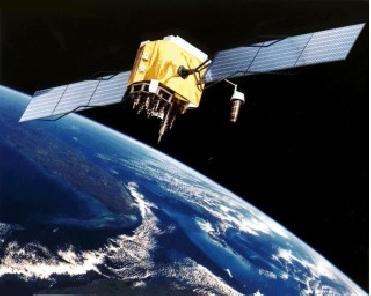
Exoplanet orbiting close to its sun. Image credit: NASA
WASHINGTON (BNS): In its quest to find Earth-like planets in the cosmos, NASA�s new exoplanet-hunting Kepler space telescope has detected the atmosphere of a previously known giant gas planet � HAT-P-7.
The planet, transiting a star located about 1,000 light years from Earth, resembles a �hot� Jupiter because its orbit, combined with a mass, is somewhat larger than the Solar System�s mega planet. The planet orbits the star in 2.2 days and is 26 times closer than Earth is to the Sun. Its proximity to the star makes it as hot as the glowing red heating element of a stove, according to NASA.
Tracking the transit of HAT-P-7, Kepler has found a smooth rise and fall of light between transits caused by the planet�s changing phases, similar to those of our Moon. This is a combination of both the light emitted from the planet and the light reflected off it. The smooth rise and fall of light is also punctuated by a small drop in light, called an occultation, exactly halfway between each transit. An occultation happens when a planet passes behind a star.
�The depth of the occultation and the shape and amplitude of the light curve show the planet has an atmosphere with a day-side temperature of about 4,310 degrees Fahrenheit. Little of this heat is carried to the cool night side. The occultation time compared to the main transit time shows the planet has a circular orbit. The discovery of light from this planet confirms the predictions by researchers and theoretical models that the emission would be detectable by Kepler,� NASA said, adding the new data will help scientists study this hot Jupiter in unprecedented detail.
The new findings demonstrate Kepler has the precision to find Earth-size planets. The observed brightness variation is just one and a half times what is expected for a transit caused by an Earth-sized planet. Although this is the highest precision ever obtained for an observation of this star, Kepler will be further precise after analysis software being developed for the mission is completed, the space agency said.
Kepler will spend the next three-and-a-half years searching for planets as small as Earth, including those that orbit stars in a warm zone where there could be water. The telescope will do this by looking for periodic dips in the brightness of stars, which occur when orbiting planets transit, or cross in front of the stars.
 Previous Article
Previous Article Next Article
Next Article













The Indian Air Force, in its flight trials evaluation report submitted before the Defence Ministry l..
view articleAn insight into the Medium Multi-Role Combat Aircraft competition...
view articleSky enthusiasts can now spot the International Space Station (ISS) commanded by Indian-American astr..
view article